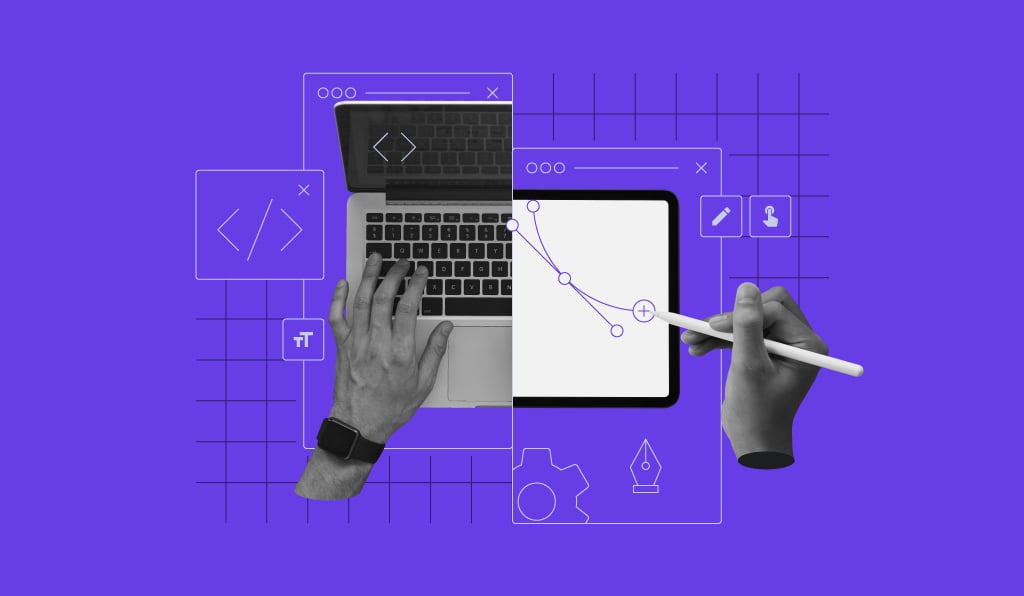Welcome to 2025, where websites are no longer just digital brochures, but living, breathing ecosystems that think, learn, and change in real time. Design is no longer synonymous with adornment. It is infrastructure.
Webflow, an easy no-code platform, is at the heart of this revolution, empowering designers, marketers, and even C-suite executives to create smarter, faster, and more user-focused websites. Forget developer bottlenecks. This year, the future is being developed, launched, and iterated in real time.
Let’s look at the 12 UX trends that are transforming future of web design this year, and how Webflow is leading the way.
1–4: Visuals That Do More Than Look Pretty
1. Scroll-driven storytelling
The scroll represents your plot twist. Users in 2025 expect websites to move—literally and emotionally—with their fingertips. Consider vertical motion cues, scroll-triggered animations, and storylines that flow in time with user action.
2. Anti-Template Everything.
Your website should not look like it was put together from leftover components. In 2025, templates that resemble templates will be considered a red flag. Webflow has established bespoke layouts, stark asymmetry, and modular real-time content as the new standard.
3. Brutalism with Brains
Brutalist design has returned—but with UX intelligence. The raw, stripped-down design is now complemented by fluid motion, real-time interactivity, and attention-grabbing images. All power, no clunk.
4. Micro-Interactions at Each Turn
Micro-interactions, such as hover states and animated form fields, provide nuance to the user experience. Webflow enables you to add them at scale without breaking a sweat—or the website.

5–8: Intelligence Meets Interaction
5. AI-powered personalization.
Forget the “one-size-fits-all” websites. With AI in web design, user behavior informs layouts, copy, and CTAs almost instantly. Expect information that changes depending on scroll speed, location, and even the time of day.
6. Content as Interface
Text is more than just passive—it is responsive. Headlines that animate, product descriptions that function as buttons, and body copy that responds to clicks. In 2025, writing will be a user interface element.
7. Voice and Gestures Navigation
Touch is only the beginning. Users can now speak and gesture their way through websites thanks to advances in accessibility technology and smarter device integrations. Webflow’s versatility makes multimodal UX more realistic than ever.
8. Predictive UX and Smart Loading.
Users aren’t waiting any longer. Predictive UX means that your site knows where the user is going and loads content before they arrive. With skeleton displays and subtle transitions, the site experience feels seamless—even telepathic.
9–12: The No-Code (But Full Power) Revolution
9. No code, no compromise.
The term “no-code” used to signify “limited.” It now signifies boundless. Webflow allows teams to create enterprise-level digital solutions without writing a single line of code—and the speed advantage is game-changing.
10. Use modular, component-based design to simplify scaling.
Webflow’s reusable design tokens, components, and global styles enable teams to build faster, iterate smarter, and maintain consistency across hundreds of pages.
11. Converting Design Aesthetic appeal is desirable.
Conversions are better. In 2025, UX is based on behavior, including scroll depth, bounce triggers, and navigation behaviors. Webflow provides teams with analytics and flexibility to shift quickly.
12. Accessibility is baked in
No more treating accessibility as an afterthought. Today’s UX is inclusive by design. Webflow’s inbuilt accessibility capabilities, which include screen-reader compatibility and motion settings, make WCAG compliance a default rather than an optional activity.
Why Does This All Matter?
Websites are no longer merely websites. They are where brands live. They are where clients decide whether to trust you or depart. And if your digital headquarters does not adjust in real time, you are not falling behind; rather, you are invisible.
Webflow is not simply riding the UX wave of 2025. It is shaping it.
TL;DR?
2025 web design is fast, personalized, and no longer needs a code editor to be powerful. If your website isn’t scroll-responsive, AI-smart, and accessibility-first, it’s already outdated. Webflow gives you the power to build future-forward sites—without delay, without compromise.
FAQs
What is Webflow, and why will everyone be using it in 2025?
Webflow is a no-code design tool that allows teams to create responsive, intelligent websites without using code. It’s popular because it balances creative control with rapid development.
Is it possible to develop scalable websites with Webflow?
Absolutely. Webflow’s component-based design systems and CMS are excellent for growth in businesses of all sizes, from startups to corporations.
Is Webflow free to use?
The free tier allows you to explore and experiment. Upgrade to get professional hosting, CMS access, and team features.
Is no-code truly the future?
It’s not the future; it’s the now. No-code enables faster iteration, leaner teams, and more effective testing—all of which are critical in today’s digital economy.
Note: “Design in 2025 isn’t just about trends—it’s about transformation, where every click, scroll, and second counts toward building trust and driving action”
“In a landscape where attention spans are short and expectations are sky-high, your website isn’t just your first impression—it’s your entire conversation.”
